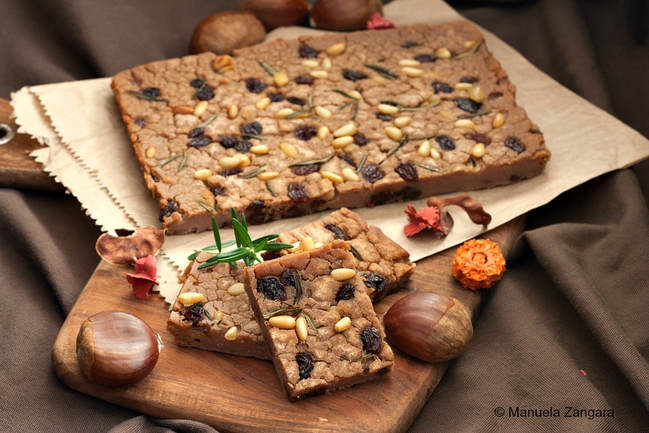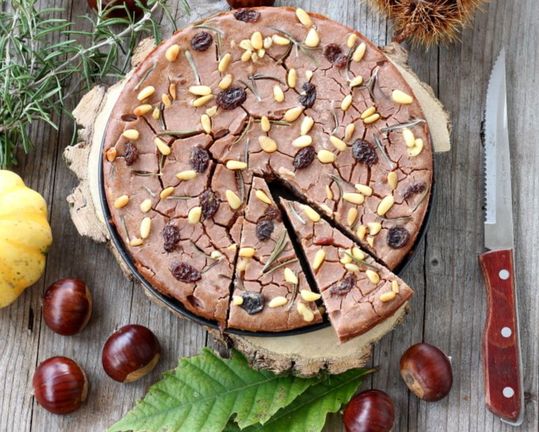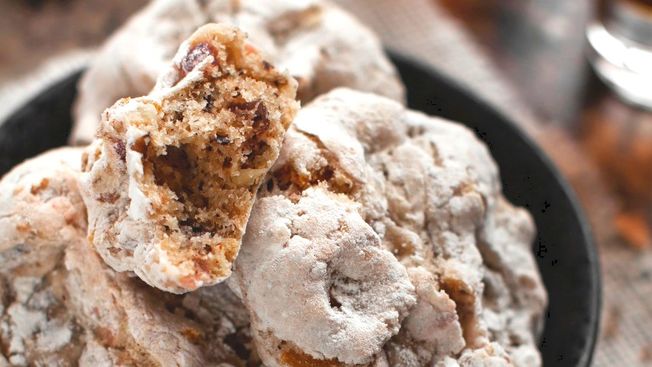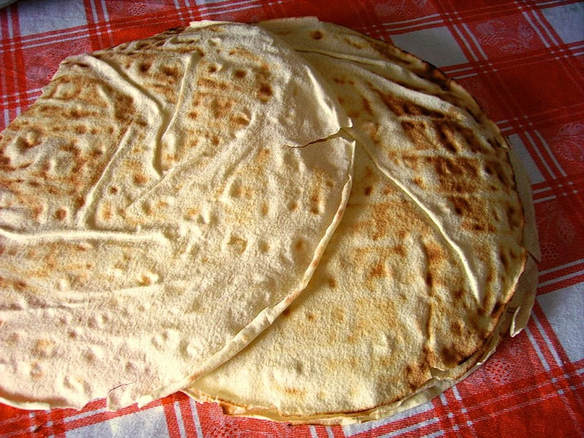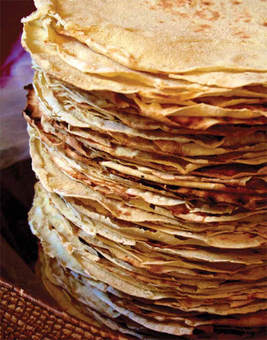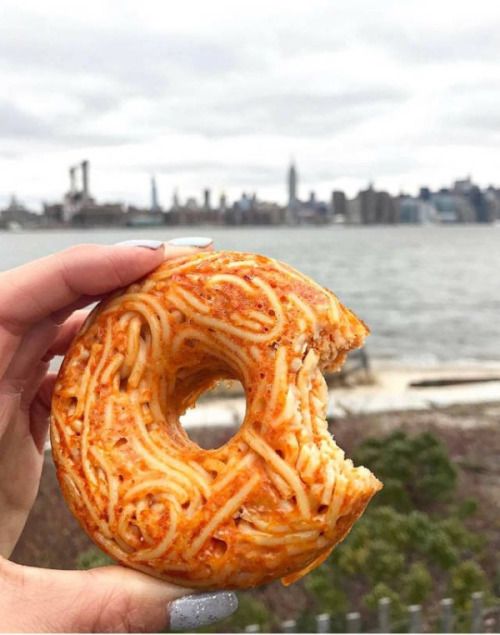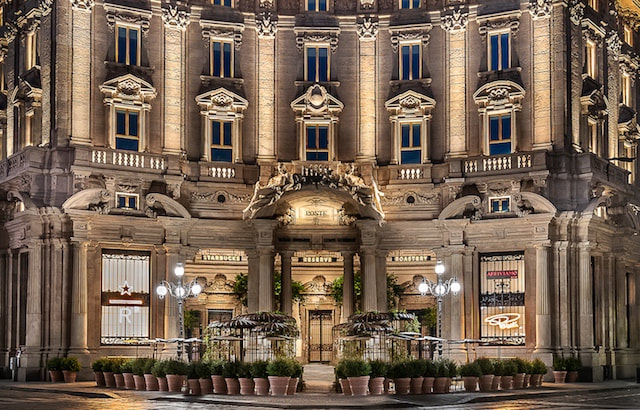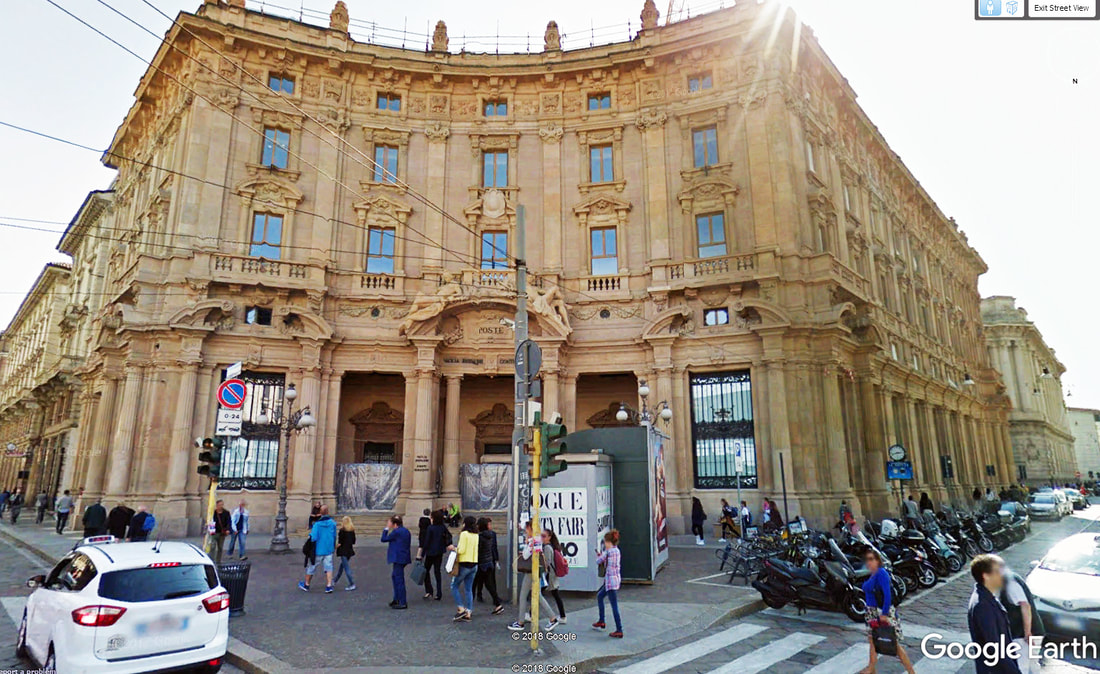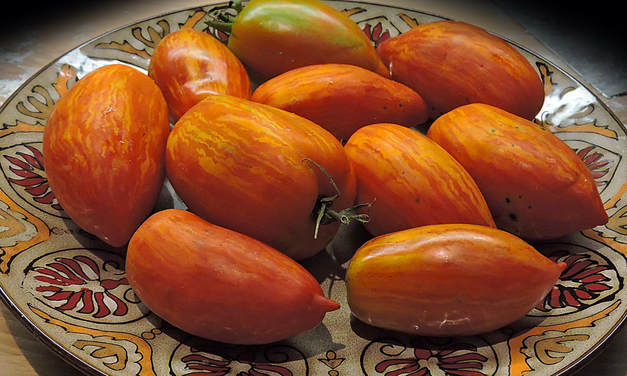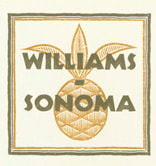|
When autumn comes to Tuscany, you will be able to enjoy Castagnaccio, a torta rustica made with chestnut flour and olive oil that has ancient origins. In the 1500s it was well known in Tuscany as cucina povera, a dish prepared by poor, peasant farmers and shepherds. Chestnuts were plentiful in the hills of the Apennines and easy to harvest, not only for its nutritious flesh but also for chestnut flour. Chestnuts (castagne) are rich in protein, calcium and vitamin A.
This torta can also be called baldino, ghirighio, toppone or pattona, depending on where you are in Italy. Local variations may include other ingredients, such as rosemary, orange peel and fennel seeds. There is even one romantic legend that says when its perfumed with rosemary, Castagnaccio is a powerful love potion--making and serving it the object of your affections will make them fall in love with you, and ask for your hand in marriage. Perhaps this is more than just a dish served during Natale, but also appropriate for Valentine's Day! In its earliest conception, it was an easy way to make a portable food (like an energy bar) that stored well for long periods, helping sustain poor contadini during long, harsh winters. According to Ortensio Landi (1553) in his “Commentario delle più notabili et mostruose cose d’Italia e di altri luoghi“ ("Commentary on the most notable and monstrous things of Italy and of other places"), he traced its origins to a man called Pilade from Lucca. By the nineteenth century however, the addition of pignoli and dried fruits morphed this spiced cake into a dessert deserving of the Christmas season and its popularity spread to Liguria, Piedmont and Emilia Romagna and even on the nearby French island of Corsica. Today you will find castagnaccio just about everywhere in Italy during Natale festivities. Keeping with Tuscan tastes, typically, no sugar is added because of the inherent sweetness in the chestnuts themselves and the addition of dried fruit and raisins. Castagnaccio is often served with ricotta, honey or sweet wines such as Vin Santo. 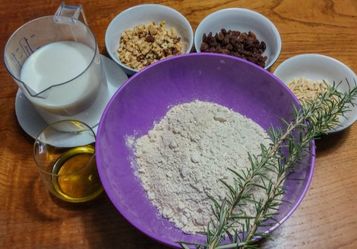
Ingredients
Optional: You can soak the raisins in rum, Amaretto or orange liquor instead of water for a more adult version.
Directions
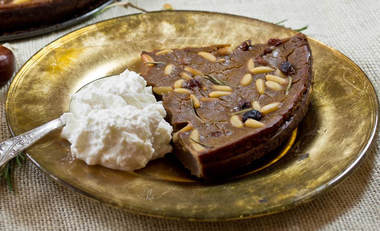
Serve with a glass of Vin Santo, and a dollop of fresh ricotta on the side, and drizzle both with a Tuscan honey of your choice.
Buon appetito! --Jerry Finzi
For further reading:
Chestnuts: The Italian Love Affair with Castagne Foto del Giorno: Chestnut Vendor Harvest Festivals in Italy: From Grapes to Wine, and More
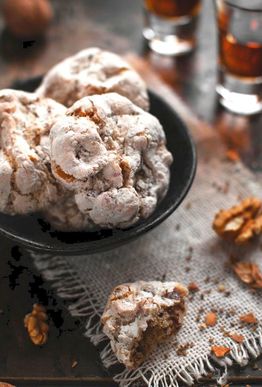 When you bite into a Tuscan cookie like Cavallucci Sienese, you'll be tasting traces of a medieval or Renaissance past... layered spices, honey, nuts, figs and canditi (mixed dried fruits), but not the typical dried fruit used in modern Italian holiday breads, but luscious candied fruit. Keep in mind, these are not pretty biscotti, they are both rustic and a bit boring looking on the outside, but soft, sweet, fragrant and flavorful inside, where it counts. A Bite of History You can find these historic cookies in shops all over Tuscany, but especially in it's hometown of Siena. When you bite into one you will be transported back to fifteenth century Siena... The name can be attributed to the fact that they used be embossed with either an image of a horse (cavallo means horse) or a horse's hoof--in fact, many today are shaped like a horses hoof. Some claim the cookies can be traced back to the reign of Jonah the Magnificent (1449–1492), when they were called biriquocoli. Others say that cavallucci were served to travelers and couriers on horseback (think "Renaissance Pony Express") as a source of nourishment for long trips (something like a Medieval power bar). Some Sienese claim that these dolci were the snacks for servants who worked in horse stables of rich Italian aristocrats in the various contradi (neighborhood districts), of obvious fame for the annual Palio horse race each year. During the Christmas holiday season, they are served with wines such as Vin Santo, Marsala, Passito di Pantelleria, Asti Spumante or Moscato--dunking is perfectly acceptable and some would say, required. 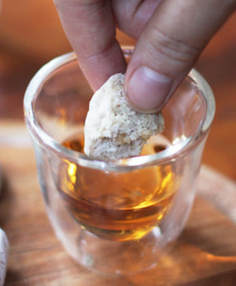 Ingredients
Directions
Serve with a sweet Italian wine, Amaretto or Sambuca. Bouna Festa! --Jerry Finzi For further reading:
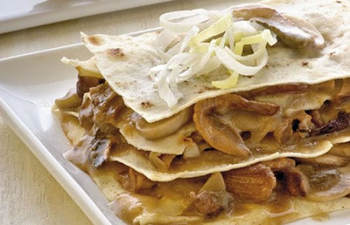
Ancient Sardinians had a saying: Chie hat pane, mai no morit (who has bread, will never die). This is true for most of the world. Pane Carasau is one of the ancient breads they were talking about. You can imagine the ancients making this bread because of its long storage capabilities and portability.
It is a a very thin flat bread--some might call a cracker--that was traditionally made for shepherds by the housewives to carry with them for long months on high pastures with their flocks. They can be eaten with sausage and cheese, or dipped in milk to re-hydrate for colazione and drizzled with honey or jam. Pane Frattau is a soup made with shards of Pane Carasau, meat, eggs, cheese and tomato. Modern Sardinian chefs are also using pane carasau in their recipes, for instance, carasau lasagna. The tedious method by which is is made creates a thin, crispy bread that will last literally for months, even if it happens to crack into shards along their travels. There are some who refer to this flatbread as carte della musica (music sheets) because of its thinness. The dough itself is fairly simple: durum wheat, yeast, water and salt. It's rolled into extremely thin rounds and baked in a wood oven until the bread puffs up like a balloon, then quickly (with dexterity, not to get steam-burned) cut into two halves, making it even thinner. They are then toasted again in the oven and dried completely. Nowadays, in Italy you might even come across packaged Pane Carasau in supermarkets.
Ingredients
Directions
Calling all Milanese! Attenzione a tutti i Milanesi! The new Starbucks is opening today on Piazza Curdusio in Milano! The location is in the old post office... Please... visit the store, order one of their "coffees" and perhaps shoot a video of your visit and post it here on GVI... Tell us what you think about the "Starbucks Experience". Take photos of their menu and prices--and their giant sized offerings. Are the high prices (and high sugar & fat content) really worth a few couches and free WiFi?
GVI wants to know, and will include your impressions in an upcoming article. Let's really take a look to see if Italians really want Starbucks in the land of Moka pots and espresso. You can contact us here, or send us email via our Grand Voyage Italy Facebook page. --GVI For further reading: Will Starbucks Make it in Italy, Home of the Quick, Tiny Espresso Shot? My all-time favorite tomato is Eva Purple Ball--a pink-purplish, 2-3" round globe heirloom tomato that I've been growing for almost 20 years. ("Sweet like sugar", as my Dad always said about his home grown tomatoes). Eva is impeccably disease resistant, with a smooth, flawless skin and produces well. Next in line is Giant Belgium--a large, pink beefsteak tomato. Like Eva, it has a rich, sweet flavor, but large enough for one slice to cover a small dessert plate (great for caprese). But last year I found a fat, orange striped tomato in a local farmers' market that I fell in love with. I saved seeds from one of the biggest ones and planted two plants this season. Well, I'm in love again! This tomato is a large, plum style that grows about 3-5-1/5" long, with a pointy end (often with a very pointy nipple). Some grew so fat that I could not wrap my hand around them. It's very fleshy with low acidity--perfect for making sauce. But it's very sweet! I've gotten into slicing ovals on the bias for my panini and American style hoagie sandwiches. I've made sauces twice for pasta, and even used them sliced as a pizza topping (like I'm doing again tonight).
The only problem is, the chipmunks in my garden love them almost as much as I do.But even with those few losses, I'd estimate that the two plants produced about 20 pounds of these so far, and there's still a few on the plants coming ripe. I did several Google image searches until I verified the type--Striped Roma. I've already saved seeds for next season... You can find some seeds HERE. God, I love tomatoes. Home-grown, that is. --Jerry Finzi |
Archives
May 2024
Categories
All
|

